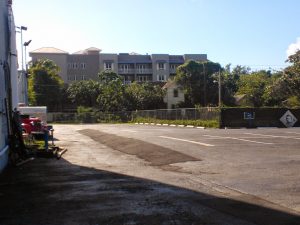 Scratch beneath any story in Coconut Grove and you’ll discover the issue of race lurking. We’ll get to that eventually, but this true fable — with a twist on the race issue — starts with the approval of a Wawa gas station in the City of Coral Gables.
Scratch beneath any story in Coconut Grove and you’ll discover the issue of race lurking. We’ll get to that eventually, but this true fable — with a twist on the race issue — starts with the approval of a Wawa gas station in the City of Coral Gables.
So what? Cities approve gas stations all the time. However, this approval didn’t have any public consultation with the community, nor public hearings, both of which would normally have taken place. And, that’s why this is a story in the first place.
It may be different where you live, but Wawa is on an extensive expansion campaign in my area of Florida. This time Wawa Public Relations may have bit off more than it can chew with this location in Coral Gables, said to be the very first planned community in the United States. The plan, right from the start, was to keep Black people out.
There was one small exception to the historic and unspoken sundown rule, the MacFarlane Homestead Historic District, which we’ll eventually get to. Suffice to say that to this day 91.3% of the residents of Coral Gables are white (July 1, 2019). [NB: Latinx is considered White.] Demographics like this are not accidental. [Read: Sundown Towns, by James Loewen.]
To get up to speed, and because I don’t want to re-chew the same cud, you might want to take a look at why I call Coral Gables the town that racism built:
Further reading:
• No Skin In The Game; Part One
• No Skin In The Game; Part Two
• No Skin In The Game; Part Three
• No Skin In The Game ; Part Four
 Get comfortable. I’m excavating 130 years of racial history around a small patch of Miami-Dade County, which sits on the dividing line between 2 communities, one Black and the other White:
Get comfortable. I’m excavating 130 years of racial history around a small patch of Miami-Dade County, which sits on the dividing line between 2 communities, one Black and the other White:
Why a Wawa?
Way back near the turn of this century, Miami-Dade County decided to gift a parcel of land (for $10, which would be $14.47 in today’s dollars), at the intersection of Grand Avenue and US 1, to a 501c3 non-profit to build affordable housing and some light retail. A worthy goal.
This triangle wedge of land is at the extreme southwestern corner of the triangle that makes up the MacFarlane Homestead Historic District [outlined in red at right]. I’ve previously described the MacFarlane Homestead Historic District as where Coral Gables hides its racism in plain sight. We’ll get back to that.
The 501c3 non-profit is called the Lola B. Walker Homeowner’s Foundation (named after an early Black pioneer). The property is now estimated to be worth $8-$10 million. While it’s wholly in the city of Coral Gables, it abuts the City of Miami, More specifically, Coconut Grove. To get more specific: West Grove, and, to put a pin in it: Black Grove.
The dividing line between Coral Gables and Miami is Grand Avenue, on the southern edge of that triangle, and Brooker Street on the east. At one time it belonged to Miami, but was annexed by Coral Gables (to hide it in plain site. Long story.)

Grand Avenue has long been considered the vehicular gateway to Coconut Grove. At one time it could have truly been a grand avenue, because that’s how it was envisioned when it was surveyed near the turn of the last century. Speed through a few decades in which the western stretch of Grand Avenue suffered greatly from systemic racism. While both ends of Grand are in the 33133 Zip Code, and only about 4,200 feet separate them, only one side is considered to be in one of the most exclusive areas in the country. As soon as one crosses Margaret Street everything changes, as you cross into White Grove. The difference is obvious to the naked eye, not just property values on Zillow.
Skip ahead to 2002, eighteen years ago. After much public meeting, community consultation, and charettes, a … err … grand plan was produced that would have brought that Grand Avenue Gateway to fruition. It never happened. Yes, I’ve written about that, too.
Further reading: The Grand Avenue 2002 Vision Plan , part of my Unpacking Grand Avenue series.
Where were we? Right, that smaller triangle of land where, in 2002, the non-profit 501c3, Lola B. Walker Homeowner’s Foundation teamed up with the for profit Redevco Corporation to build what came to be called Bahamian Village [left] with the aforementioned affordable housing.
Then, suddenly, nothing happened.
Nothing happened for a very long time.
Nothing happened for such a very long time that Miami-Dade County got pissed and sued the non-profit: ‘Do what you promised [affordable housing and light retail] or we’re gonna take the land back.’ By the time that suit got settled in favour of the non-profit, the land use was very different than it had been. Now it was going to be a restaurant and some light retail. The concept of affordable housing seems to have fallen by the wayside.
Then the land sat some more.
Nothing still happened some more.
Miami-Dade launched another lawsuit.
When this legal action was settled in favour of the non-profit, the decision was made to just toss in a Wawa and be done with it.
Just so nobody would become aware of this bait and switch until it was far too late to do anything about it, the City of Coral Gables did all of this permitting for the Wawa without notifying the neighbourhood or having any public comments as would normally be the case for ANY development. One of Coral Gables’ excuses was that 45 residents of the MacFarlane Historic District signed their approval for the project and those residents were also the Lola B. Walker Homeowners Foundation, the HOA that somehow became a non-profit, that teamed up with Redevco, which has a good reputation for redevelopment elsewhere.
 This HOA was once quite powerful in Miami-Dade politics [see letter at right], but that power has diminished as the original residents have aged and/or died off. Some passed the houses down from generation to generation, as other families do jewels. There are now children, grandchildren, great-grandchildren of the original residents and not all were content to stay in the same neighbourhood and moved away.
This HOA was once quite powerful in Miami-Dade politics [see letter at right], but that power has diminished as the original residents have aged and/or died off. Some passed the houses down from generation to generation, as other families do jewels. There are now children, grandchildren, great-grandchildren of the original residents and not all were content to stay in the same neighbourhood and moved away.
However, the community is still tight, cohesive, and Black. It’s that last part that gives it out-sized influence. This may be their final kick at the can before they kick the bucket.
CREDIT WHERE CREDIT’S DUE: I knew I was chasing Linda Robertson of the Miami Herald to the finish line on this story, but she got there first. And, it’s good. So good that I’m going to steal. From West Grove was promised affordable housing. So, why are they winding up with a Wawa instead?
[Coral Gables Commissioner Vince] Lago said the homeowners approached him when the county sued to take back the undeveloped land and the city responded by “doing everything in our power to bring an economic driver project and community center to fruition.”
“The residents are in favor of the Wawa. I think it’s heavy-handed and overreaching to step into a predominately Black neighborhood and tell them what to do,” he said. “Would I have liked to see some housing? Yes. Does the community center need to engage more and expand its programming? Yes.”
I think it’s overreaching for Coral Gables to play the race card on this play. It’s incredibly disingenuous since the MacFarlane Apartheid Triangle™ was, at one time, the ONLY place Black folk could live in Coral Gables. At one time if you were Black and found in Coral Gables (except in this triangle, of course) you would be asked to produce your papers. Those consisted of a note from your employer: “John Smith is my handyman or gardener or chauffeur” or “Mary Smith is our cook or maid or nanny.” A lack of papers would get you jailed for vagrancy.
This is within current living memory.
Furthermore, none of the current houses in this MacFarlane triangle could be placed in any other part of Coral Gables today because they would not be up to code in the rest of the city. But, the code’s okay for these Black folk just fine.
So, with another lawsuit looming — and everybody’s back to the wall — Coral Gables let this deal go through, and this is just my opinion, because they thought it would not be a good look to say “No” to a predominately Black neighbourhood association even though — and it’s worth stressing — this is a historic district on the National Register.
 ◄ Here’s a historic Wawa. It doesn’t seem to fit the whole Bahamian idea of West Grove and the MacFarlane District.
◄ Here’s a historic Wawa. It doesn’t seem to fit the whole Bahamian idea of West Grove and the MacFarlane District.
Robertson continues:
But no one is explaining precisely how the Bahamian Village was replaced by a gas station and Wawa — or who benefits most from the deal. Not Redevco, which seems likely to reap a tidy profit from leasing the property to Wawa, a 750-store chain based in Philadelphia.
Not the Black homeowners, whose only known gain is a community center, which in reality is a conference room at the back of the developer’s new office headquarters, built on the eastern end of what will be Wawa’s large parking lot.
Not government officials in Coral Gables who fast-tracked the project in a historic district of the city.
Two homeowners association officers did not return phone calls from the Miami Herald. A third declined to answer questions, recited the “Serenity Prayer” and hung up.
Let’s be clear: A non-profit 501c3 is allowed to team up with a for profit company to do pretty much anything. However, if this is such a good deal for the MacFarlane HOA and the City of Coral Gables, why do it in the dead of night after you’ve blown out all the candles, locked all the doors, and lowered the Cone of Silence?
You’ll find far more in Linda Robertson’s article. She mines veins of this story I’ve left alone because I’m off on historic tangents she didn’t explore. However, it’s worth your time.
So…after the citizens woke up to this fait accompli, Coral Gables finally held a [remote] public hearing. But by then, the Wawa was already out of the Trolley Barn.
TROLLEYGATE REDUX:
This is not the first time that the City of Coral Gables has gifted West Grove with a building it didn’t want and probably didn’t conform to the various laws and codes covering the property before the city looked away. However, at least this time the building is in Coral Gables proper and not Miami, the city next door, that looked away the last time. A quick history lesson:
Some years back Coral Gables wanted to develop a piece of land, but its trolley barn (called “trolleys” because they are painted to look like cute little electric trolleys) stood in the way of any redevelopment payday. Consequently Coral Gables entered into an agreement with Astor Development in which Astor would get to redevelop the property, provided it built a new, improved trolley garage to replace the one that would be torn down. Win/win.
Astor Development looked around and found some cheap property. It needed to combine a few lots, but that was easy because it had money and the land was cheap. The land was cheap because it was in West Grove — Black Grove — where land prices were depressed for the same reason land is depressed in any — and every — Black neighbourhood in ‘Merka: Systemic racism, another topic for every day.
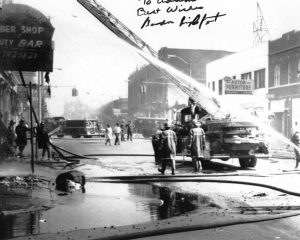 [Here’s my shortest tangent ever: I’ll never forget the name of the developer because Astor Furniture, in Detroit, was the name of Pops’ store. At left: The Black Day in July autographed by the guy who wrote Black Day in July. Read more here.]
[Here’s my shortest tangent ever: I’ll never forget the name of the developer because Astor Furniture, in Detroit, was the name of Pops’ store. At left: The Black Day in July autographed by the guy who wrote Black Day in July. Read more here.]
The main point being that Astor Development didn’t find property in Coral Gables to build its polluting Coral Gables bus garage. It found property in the Black area in the next town to build its polluting bus garage. Over the decades, in any community you can name, those things that pollute were always dropped into Black districts.
Again, because I don’t want to trod over the same ground I covered 7.5 years ago, I point you to all my previous writing on Trolleygate, in which I demonstrated exactly where the illegal corruption lay, but nobody cared. However, if you don’t want to read it all, here are a few samplers from the assortment pack:
An Introduction to Trolleygate
BLOCKBUSTER!!! The Trolleygate Smoking Gun Surfaces
Trolleygate Violates 1964 Civil Rights Act ► Not Now Silly Vindicated
Modern Day Colonialism and Trolleygate
An Update On Sarnoff’s Trolleygate aka Astor’s Trolley Folly
OLD SMOKEY REDUX:
Let us now turn our attention to another ancient sore point: The incinerator that was nicknamed Old Smokey.
Old Smokey belched out smoke and particulates into West Grove — Black Grove, because that’s where you drop things like this — for decades. However, it wasn’t until the White folk of Coral Gables started complaining about the pollution, that old Smokey was finally shut down.
[BONUS: Old Smokey’s toxic ash was spread throughout Miami parks and neighbourhoods as fill for the swamp that once was. No one really knows what kind of toxic time bomb lurks beneath a lot of Miami properties. People don’t want to have their soil tested because a bad result could halve their property values. That was the story that Not Now Silly dubbed Soilgate, and when current Miami District 2 Commissioner Ken Russell found his desire to run for office.]
I’ve written about all of that, too. Check out:
√ A Century of Coconut Grove Racism ► Soilgate Is Trolleygate Writ Large
√ This Toxic Timebomb Could Blow Up Soccer In Miami
√ Armbrister Field Contaminated After All! Was There An AstroTurf Cover Up?
√ When Miami Commissioner Marc D. Sarnoff Lied To My Face
√ Read the Miami Herald for more about a class action suit against the City of Miami by West Grove residents over health issues due to toxic soil
THE MIAMI WALL REDUX:
Most people are unaware that the City of Miami once mandated that a wall be built between the White and Black neighbourhoods of Coconut Grove. I don’t want to hoe the same ground over and over, but I’ve written all about this, too. In Chapter One of my series Where The Sidewalk Ends, Racism Begins*:
There are two distinct sides to The Wall, as Miami New Times writer Kirk Nielsen called it 15 years ago, when he asked and answered the musical question, “How can you tell where white Coconut Grove ends and black Coconut Grove begins? Just look for the barbed wire.”
In 1946 the Miami Housing Authority approved construction of a 25-acre tract of small single-family homes for low-income blacks on Charles Terrace, west of Douglas Road. By the time the houses were completed in 1949, workers had also erected a concrete block wall along the southern boundary of the new development. As reported by the Miami Herald (and cited by Marvin Dunn in his new book Black Miami in the Twentieth Century), the city planning board required the wall in order to provide “suitable protection” for the white neighborhood. A Florida Supreme Court ruling three years earlier had rendered illegal Dade County’s segregation of black residential districts. But that didn’t stop the city from putting the wall up.
Brown and weathered, the concrete block barrier still runs a quarter-mile, from Douglas Road west to the Carver Middle School parking lot. Six feet tall, higher in some places, it divides the leafy back yards of Kumquat Avenue on one side from the tree-starved lots of Charles Terrace on the other.
Lou-vern Fisher, who moved to Miami with her parents in 1936 from Georgia, bought one of the single-family homes next to the wall with her husband back in 1950. She still lives there, with a daughter, granddaughter, and grandson. “We enjoyin’ the wall,” says the jolly 73-year-old retired maid. “They put it here for a reason. And you know the reason. To keep us from going over there,” she wags a finger, letting off a loud gravelly ha-ha-ha.
Further reading: Where The Sidewalk Ends, Racism Begins ► Chapter Two • Where The Sidewalk Ends, Racism Begins ► Chapter Three
Funny thing about that wall. The western end of it wasn’t breached because Black folks wanted it. Again, it was the White folk dropping their kids off at school who complained that they were forced to take the long way around. And the wall come tumblin’ down.
IRONY ALERT: Now we’ve come full circle: The people making the biggest fuss over the Wawa are the predominately White (Latinx) parents at George Washington Carver Elementary School, which is on the Miami side of Grand Avenue, immediately across the street from the planned gas station, at the bottom of the MacFarlane Triangle, which is in Coral Gables.
If, and that’s a pretty big if, the White (ie: Latinx) parents are able to stop the project it would once again be like both Old Smokey and The Wall, only stopped when White folks kicked up a stink.
As mentioned above, Coral Gables finally held [remote] public comments after the fact, and the PTA was represented by Miami lawyer David Winker (who I have also written about previously). “I got involved because parents at the school found out after the fact and they had a number of concerns. As I looked into this, I discovered there were a number of irregular occurances that are concerning from the perspective of transparency and accountability. […] Coral Gables treated the parents as pests and appeared almost insulted they would question a deal that resulted in $8 million of public land in a historic district, and given for free to build affordable housing, that ended up as a Wawa.”
But wasn’t that the whole point? Historic preservation and affordable housing? It’s stated as the goal in the original documents of the 501c3.

 BIGGER IRONY ALERT!!!
BIGGER IRONY ALERT!!!
This year the Florida Trust for Historic Preservation added the MacFarlane Historic District to its 11 to Save list for 2020. That’s such a big deal that Coral Gables Magazine thought it worthy of a feature article in its Streetwise section all the way back on September 18th of this year. Read Saving the MacFarlane Homestead Historic District. These clips [left and right] come from The Florida Villager‘s article The MacFarlane District Makes Preservation List.
I’m certain Coral Gables Magazine and The Florida Villager will take as much pride in its new Wawa Gas Station as it does in its historic district.
 Wawa & Me:
Wawa & Me:
I’m not anti-Wawa. I’m just against anti-Big Corporation despoiling a historic district on the down low. And, I call bullshit on the letter to the right, sent to a concerned parent.
Had I received that letter, I would have been highly offended. Not only is it a boiler-plate piece of crap about what good neighbours and corporate citizens the company aspires to be, but it’s signed by The Wawa Family. Bet there’s no Wawa Family listed in the phone book.
In my opinion this is not Best Business Practices. If I am in communication with someone at a multi-million dollar corporation, I’d like to know who that is. I’d like to know just who I should respond to after such a joke of a letter. Who is taking responsibility for this communication? But, that’s just me. The Wawa Family clearly has other ideas.
I first heard of Wawa when I was Uber/Lyfting and my pax worked there. I was curious about the name because there’s a Wawa, Ontario, Canada. As every Canadian Rock and Roll band can tell you, if you want to drive to western Canada from Toronto (and there was more than one reason not to want to drive through ‘Merka), your only alternative is to drive through Wawa. Which reminds me of a great Canadian Band who had a oft-requested song about a car breaking down in Wawa, Ontario.
Crank it up and D A N C E ! ! !
Anyhoo…I asked this young lady from Wawa if she knew why it was called Wawa, thinking that maybe there was a CanCon Connection. While she had no idea where the name came from, she went into a a kind-of monotone, droning something about how the Canadian Goose in the logo represents teamwork because, just like a flock of geese, when one tires another goose comes to the fore. She was less articulate, but I knew it was Corp Speak™ and concluded the Wawa cult was strong with this one and wondered about those corporate mind-control exercises.
I never thought about it again…until recently.
Since then I’ve popped into various Wawas to gas up Ruby Red because it usually has the cheapest gas around. However, about a year ago one opened near me. It happens to be across the street from my mechanic. If I’m ever having any work done on Ruby, I drop in on this location and people watch. I’m fascinated by the joint and have made excuses just to go there and sit. Little did I know I’d be writing about it. I should have taken notes.
 My observations and opinions of this location. Positives first:
My observations and opinions of this location. Positives first:
• Clean, meticulous, including restrooms;
• Wawa folk regularly come out, pick up trash, and swap out trash containers (as you’d expect);
• Usually the least expensive gas.
Negatives, but a lot of these you’d expect:
• A lot of vehicular traffic, natch, jockeying for pumps and parking;
• Not nearly enough parking at times;
• Not nearly enough pumps at times;
• Smell of gas and potential for fire/pollution;
• Not everybody in our society use trashcans and some of it blows beyond the reach of the Wawa people;
• More foot traffic than expected, for the retail or just to cut across the corner, which brings up an important point I want to get to.
Not all, but many of those who cut through the lot are students at Piper High School, just about a half mile away. [Not complaining, just explaining.] Pre-COVID, there would always be a lot of teens in and out of the retail, as well as using the outside tables. Because it’s a high school, some of the older students already have cars. This adds to the traffic, of course. [Just explaining.] I want to stress I have seen no misbehaviour on the part of these teens, but I have seen how older patrons respond to them. There’s unnecessary friction and some of it appears racial.
And, all that good corporate citizen bumph is just so much crap. It didn’t take much digging to find bad news about Wawa:
Neighbors oppose Walmart, Wawa rezoning on Dale Mabry
Neighbors fight Wawa near downtown Orlando
Neighbors fight proposed Hypoluxo Road Wawa
Neighbors try to stop a proposed Wawa in St. Augustine
Neighbors, school district against Bristol Road Wawa plans
 But, let’s get back to Coconut Grove. Carver Elementary school is right across the street from this proposed Wawa, at a very complicated intersection where 3 main streets converge.
But, let’s get back to Coconut Grove. Carver Elementary school is right across the street from this proposed Wawa, at a very complicated intersection where 3 main streets converge.
My conclusion is this is the exact wrong place for a Wawa, or any gas station, or pretty much any high-traffic business.
I’ve sat at this corner observing on 2 separate occasions. Both times it was during COVID. I bring that up because I assume attendance is down from normal. Both times traffic was a mess. On Grand Avenue, for a good distance on either side of the 15 MPH school zone, it’s bumper-to-bumper, making it difficult to turns off Jefferson or Brooker, east of the school zone. West of the school zone traffic bunches up at US-1 where cars jockey for position on a narrow 1 lane street in order to either make the right onto US-1, or the left onto US-1 from the single lane that opens up, or straight through the light to SW 42nd, aka S Le June Road.
Horns a’plenty, as impatient drivers try to get wherever it is they are in such a hurry to get to. Now add a Wawa gas station, the busy times of which is in the morning, during school load-in. [To be fair: I’ve not done the afternoon rush.]
One of the reasons in support of the Wawa (or at least not against) is that the Carver Kids won’t be customers. However, it’s possible the 11-13 year olds from Carver Middle School might walk over.
Regardless, I bet Carver parents will use the Wawa parking lot. How do I know? Because on the 2 times I did spotting at that corner, parents pulled over in any nook and cranny along Grand Avenue and the side streets to drop off kids. That’s part of what led to the traffic mess. Too many cars and not enough places to pull over in a place where parents need to pull over.
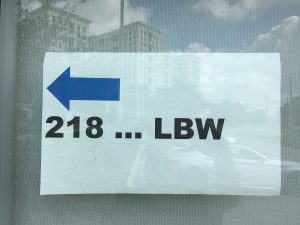
 The biggest irony of all.
The biggest irony of all.
Rule #1 in journalism is FOLLOW THE MONEY and you might think GOOD ON THEM if this historic Black homeowners association gets a little taste of reparations. But remember: This is a 501c3 non-profit. It can’t take the money out. It cannot profit.
Redevco can make bank. That’s not illegal. So, how much is Redevco making from this partnership? What did Redevco promise the 501c3 to allow its neighbourhood to be altered forever, and possibly destroyed? Were the residents hoodwinked? Were they bamboozled about the benefits of this project?
Coral Gables has already dismissed the concerns of the school parents because the school is in another city. Let them attend to their own problems.
Going forward, how will Coral Gables deal with the fallout over the lack of normal process? The Miami-Dade School Board can’t be happy about the lack of transparency. How will Coral Gables deal with the fallout when the current gridlock becomes worse? Where will Coral Gables mandate the entrance and egress to the Wawa? Grand Avenue can’t really take the traffic. Florida wasn’t designed for this traffic.
These are just some of the threads I will be pulling in the future. Stay tuned for Part Two, Three, Four…we’ll see where this goes.


 Before I ever wrote a word about
Before I ever wrote a word about 
 Which naturally leads to the Miami Herald, the newspaper of record during this period. Bottom line: The Miami Herald has always been a lousy newspaper, which this book proves over and over again.
Which naturally leads to the Miami Herald, the newspaper of record during this period. Bottom line: The Miami Herald has always been a lousy newspaper, which this book proves over and over again. Miami New Times had the perfect rejoinder
Miami New Times had the perfect rejoinder



 It’s funny how things work out. The day after I published my last
It’s funny how things work out. The day after I published my last  Meanwhile, with about 60 days to go until the election, I’m hoping to write more about my opinions of
Meanwhile, with about 60 days to go until the election, I’m hoping to write more about my opinions of 
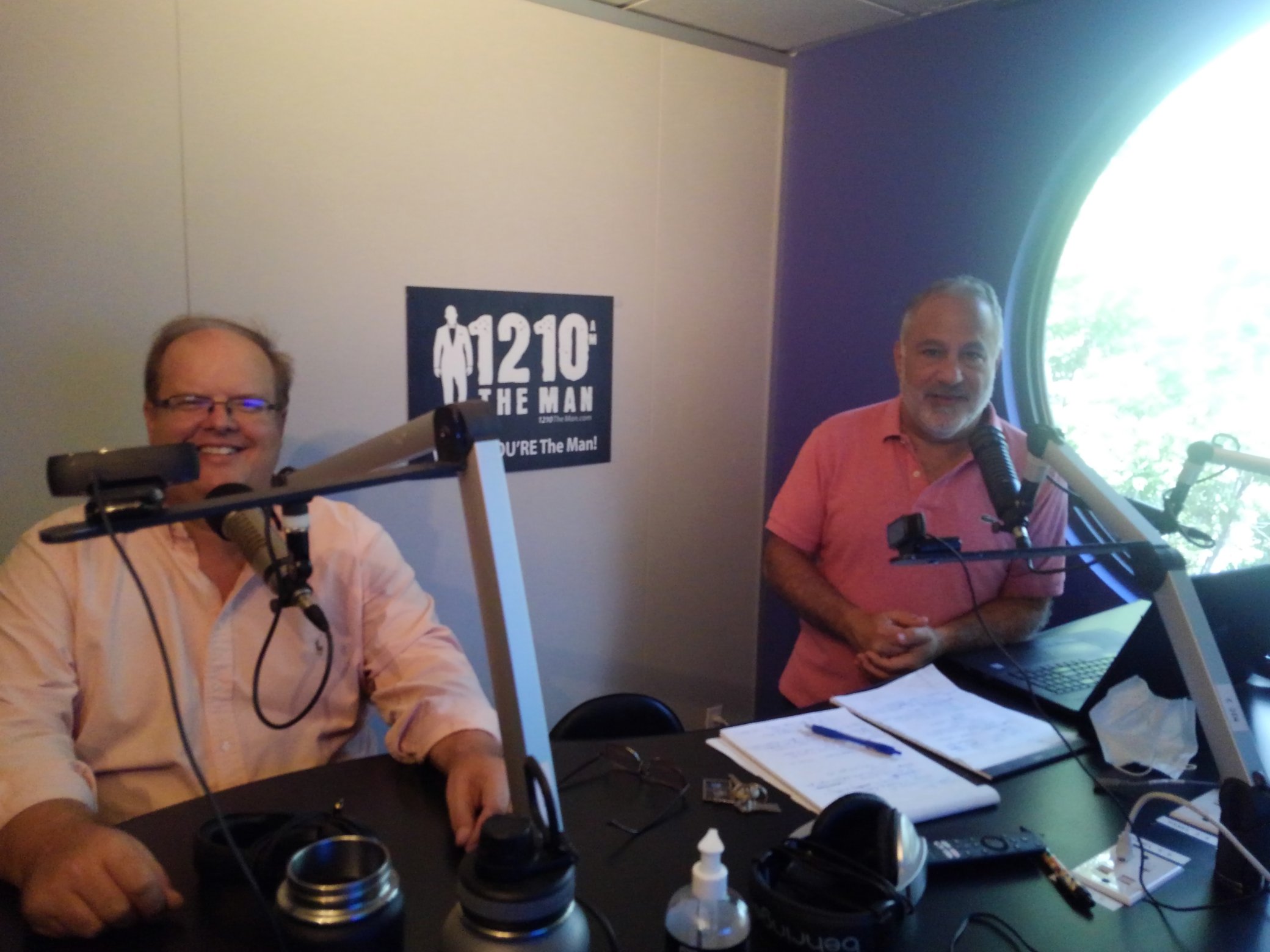
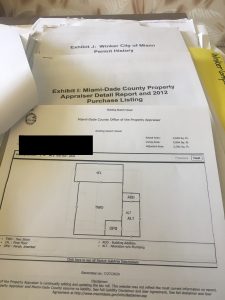 When we were done, I wanted a shower. But, I had to ask about every page — every exhibit — in those 95 pages if I wanted to find the corruption I was promised.
When we were done, I wanted a shower. But, I had to ask about every page — every exhibit — in those 95 pages if I wanted to find the corruption I was promised. Then there was the time Winker filed a suit against the City of Miami and
Then there was the time Winker filed a suit against the City of Miami and 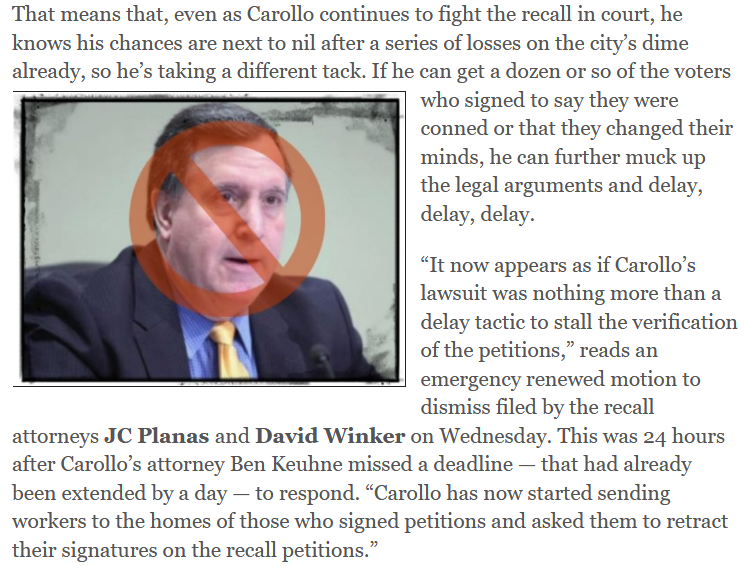
 The Miami Herald, as only that rag can, took a look at the same story and chose to
The Miami Herald, as only that rag can, took a look at the same story and chose to 



 In other words: I prefer City of Miami malfeasance to allowing a pro bono lawyer holding the city to task. [TO BE FAIR: One of the allegations is that he’s not *really* pro bono.]
In other words: I prefer City of Miami malfeasance to allowing a pro bono lawyer holding the city to task. [TO BE FAIR: One of the allegations is that he’s not *really* pro bono.]







 It’s a wonderful example of faux Mediterranean architecture and the only part of the Bright Plan ever built.
It’s a wonderful example of faux Mediterranean architecture and the only part of the Bright Plan ever built.